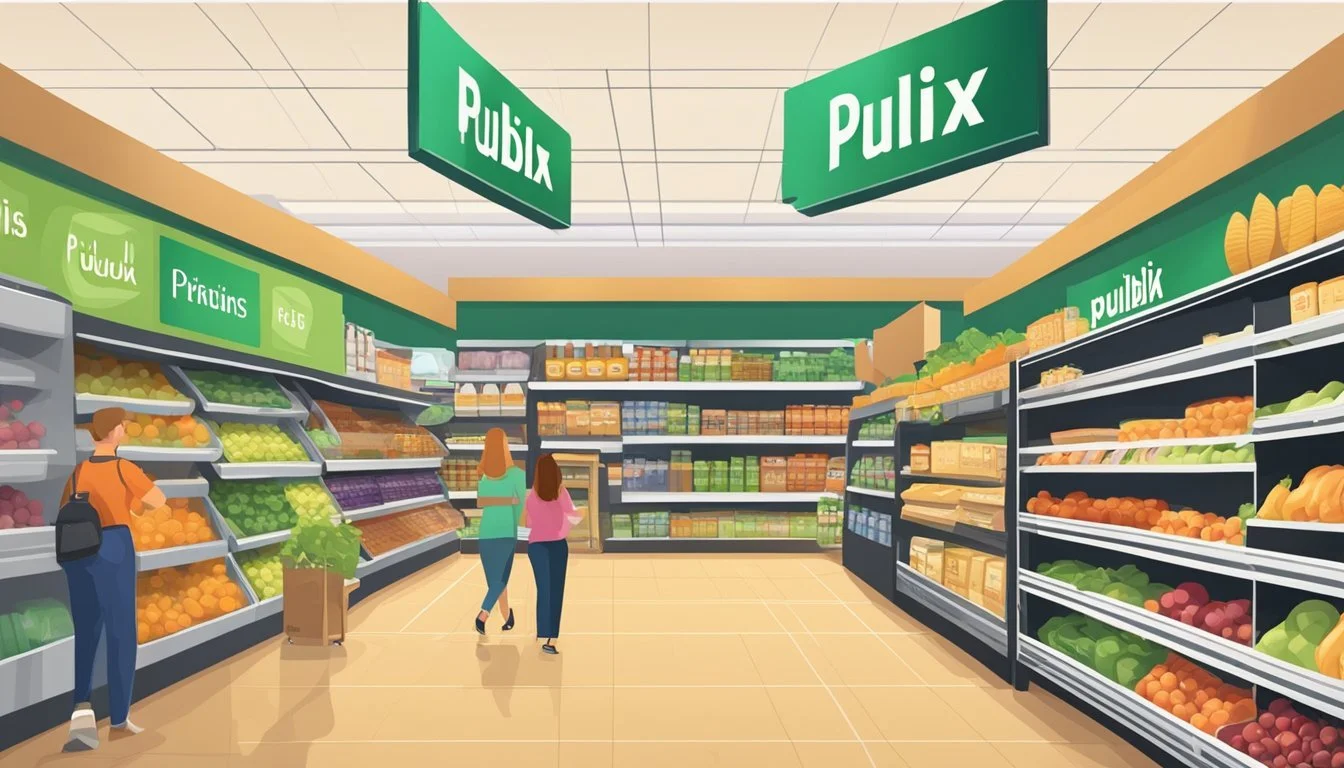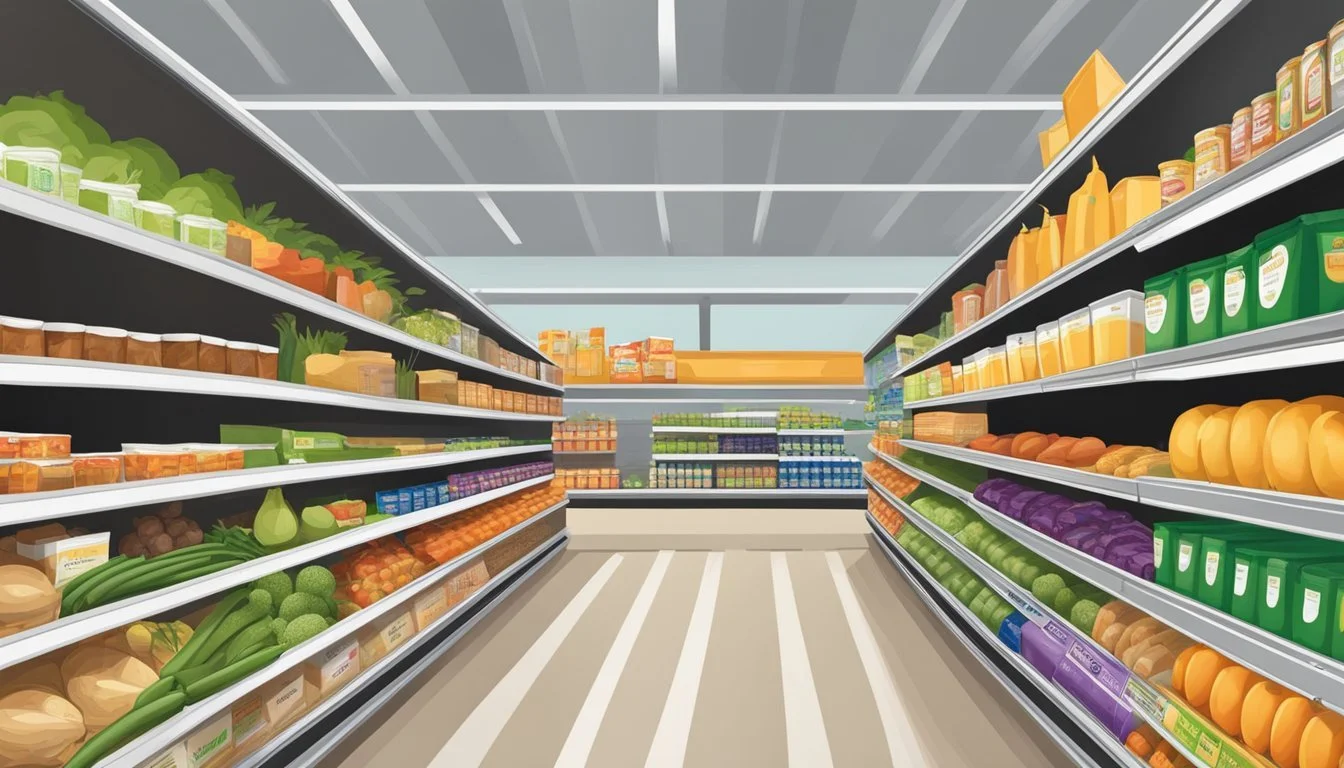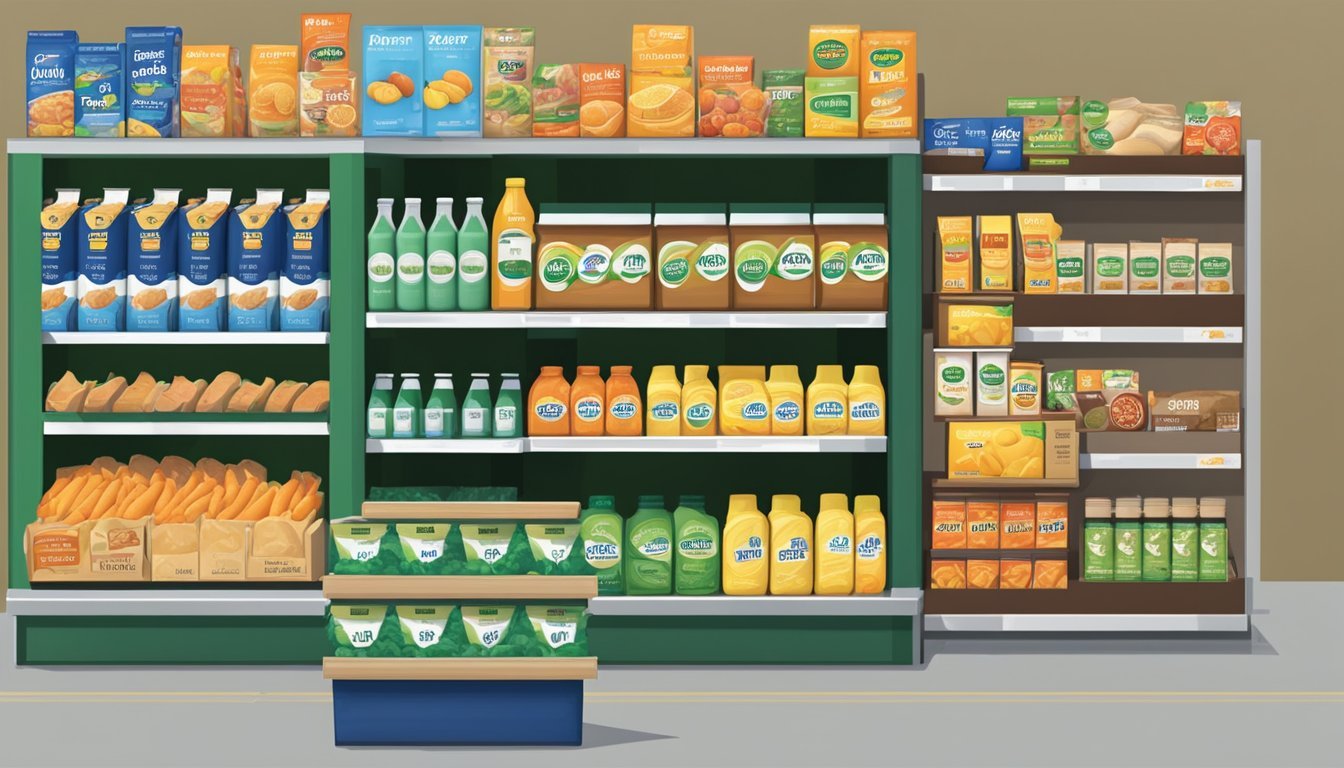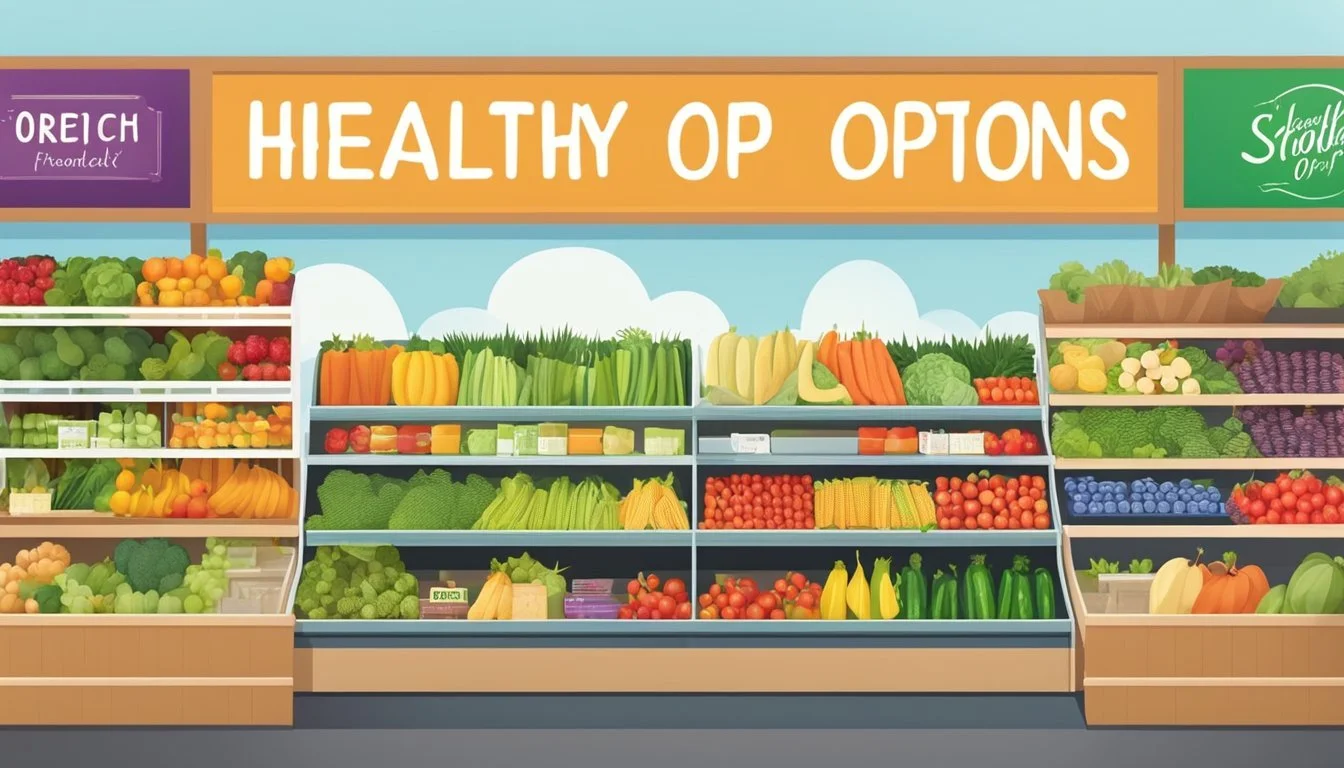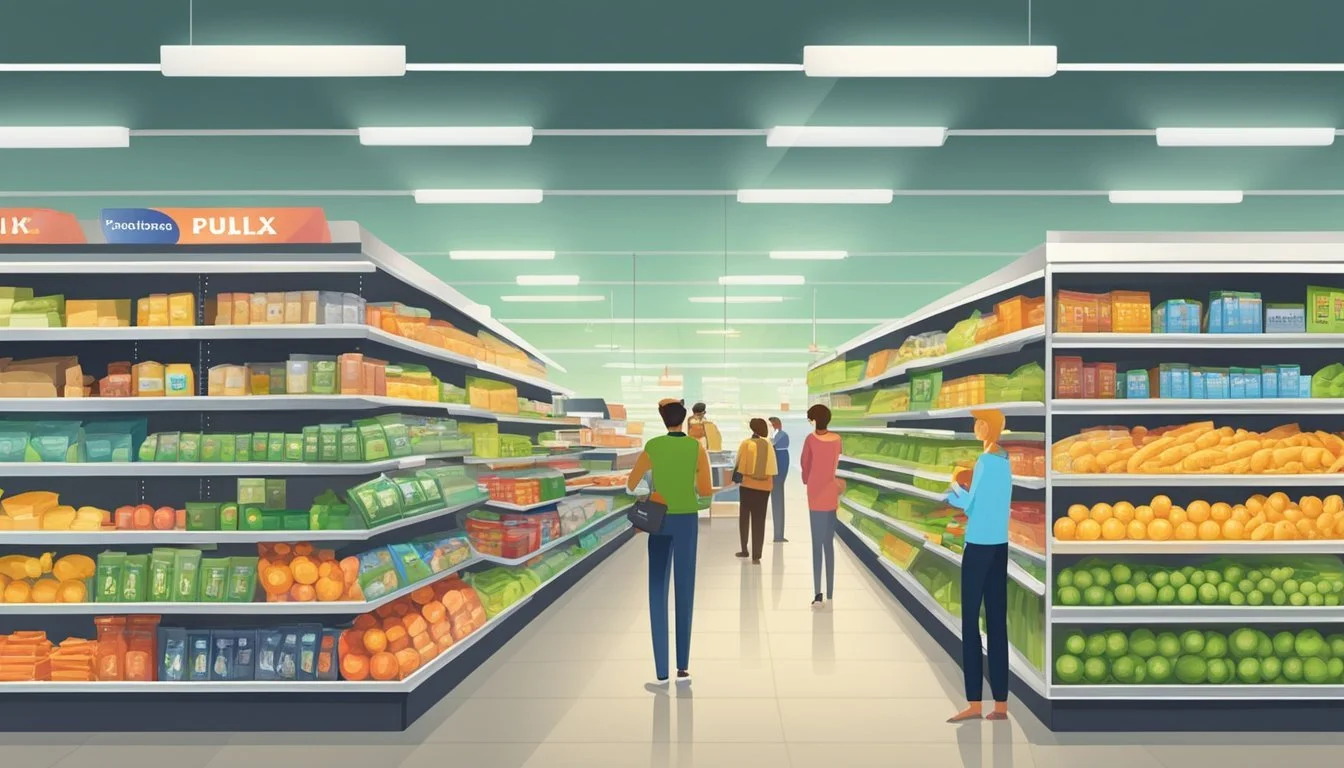Is Publix Cheaper Than Aldi?
Comparing Grocery Prices and Value
Part of Our Grocery Store Guide with Details on Publix Prices and Aldi Prices
When comparing grocery prices, consumers often look for the best deals to stretch their budgets. In the debate between Publix and Aldi, price point is a key factor for many shoppers. Aldi, known for its no-frills shopping experience and emphasis on store brands, generally offers lower prices across a variety of product categories. On the other hand, Publix is recognized for its wide selection, customer service, and clean store environment, with pricing that's typically higher than Aldi's, especially when it comes to staple items.
Although Publix sometimes presents competitive pricing in specific categories such as dry goods and personal care, the overarching consensus in market comparisons is that Aldi tends to be the more economical choice. The price gap varies, but it is reported that Aldi can be cheaper than Publix by a noticeable margin, with some assessments placing Aldi as much as 8% to 56% less expensive overall, depending on the items and location.
This price differentiation doesn't diminish Publix's appeal to a segment of consumers who may prioritize shopping experience, product selection, and store amenities. Yet for shoppers whose primary concern is the bottom line on their receipt, Aldi's focus on cost-saving strategies like limited stockkeeping units (SKUs) and smaller store footprints seems to offer a distinct budgetary advantage. The scope and impact of these pricing disparities are worth exploring to understand each chain's position in the grocery market.
Overview of Publix and Aldi
Publix, established in 1930, is a prominent American supermarket chain with a strong foothold in the Southern United States. Renowned for its customer service, Publix operates numerous stores and competes with giants like Kroger and Walmart. It typically positions itself as a convenient, but slightly higher-end, grocery option, offering a wide variety of own-brand products.
Aldi, originating from Germany, is a global discount supermarket chain known for its cost efficiency and no-frills shopping experience. It arrived in the United States in 1976, expanding significantly to compete with Walmart, and to some extent, Costco and Whole Foods. Aldi’s business model focuses on low prices, through limited assortment and in-house labeling, and has positioned itself as a leading value option for grocery shopping.
Feature Publix Aldi Pricing Competitive; higher than Aldi, lower than some conventional retailers Highly competitive; often the lowest pricing in the market Product Range Extensive; including specialty items and organic selection Limited; curated selection focusing on private labels Convenience High; numerous locations with diverse service offerings Moderate; simple store layout for easy shopping Expansion Focused in the Southern U.S. with consistent growth Rapid growth across the U.S. with European roots
While Aldi and Publix are competitors in the supermarket space, they cater to different market segments. Publix is recognized for its variety and convenience, aligning itself with brands like Target and offering an alternative to Amazon’s grocery services. Aldi takes on a more straightforward approach, appealing to customers prioritizing cost over variety, and thus stands as a strong competitor to low-cost leaders like Lidl.
Price Comparison
When comparing Aldi and Publix, it is important to weigh the value and savings across various product categories. This section provides a detailed look at typical items found in a grocery list to understand where consumers might find lower prices.
Produce
Aldi often offers lower prices on produce, with savings on a range of vegetables and fruits. For example, consumers report finding bananas and tomatoes at more affordable rates at Aldi compared to Publix.
Meat and Deli
In the meat and deli section, Aldi tends to have better value, with items like ground beef, chicken breasts, and bacon being cheaper than Publix. Shoppers can save notably on meats which are a staple in many diets.
Dairy Products
Dairy products such as eggs, milk, and cheese also showcase Aldi's commitment to low prices. Their dairy section typically hits a more budget-friendly price point than that of Publix.
Bakery
The bakery section at Aldi provides consumers with savings on bread, pastries, and cakes. Though selection may vary, the prices are generally found to be lower than at Publix.
Dry Goods and Canned Items
Aldi leads with strong bargains in dry goods and canned items. This includes pasta sauce, white rice, canned beans, and canned vegetables. Shoppers looking for pantry staples will typically find lower prices at Aldi.
Frozen Foods
When it comes to frozen foods, including ice cream, frozen vegetables, and frozen dinners, Aldi often provides the lowest prices. Customers can expect to find affordable options that fit their budget.
Personal Care and Household Items
For personal care and household items like laundry detergent, paper products, shampoo, and toilet paper, Aldi again tends to be the more economical choice. Publix may offer competitive pricing, but Aldi consistently manages to edge out with cheaper options.
Quality of Products
When comparing the quality of products between Publix and Aldi, consumers will notice differences based on varying factors such as produce, meat, dairy, and store brand items. Publix has built a reputation for offering high-quality produce with a wide variety. Their stores often feature a robust selection including organic and locally sourced options. The store’s dedication to freshness and quality is evident in their product presentation and turnover.
In terms of meat and dairy, Publix markets themselves as a provider of premium meats and a diverse dairy selection. They have strict quality control standards and offer a range of choices from standard to gourmet selections. Aldi, while offering quality options, primarily focuses on affordability which can sometimes lead to a more limited range of premium meats and organic dairy products. That being said, Aldi's store brand items often match the national brands in quality while typically being more cost-effective.
For store brand products, both supermarkets offer their own lines that promise to deliver quality comparable to national brands. Aldi’s store brands are highly regarded for their quality and value, making up a majority of their product stock. Publix also boasts a reputable store brand lineup, noted for its quality and a selection that commands customer loyalty.
Product variety is another aspect where Publix generally exceeds. They offer a broader range of name-brand products alongside their store brand, providing customers with more options to choose from.
It's clear that both retailers cater to different customer needs—Aldi shines in delivering quality at a lower price point, while Publix emphasizes a broad selection and high-quality products across the board.
Store Brands and Exclusive Products
When comparing the store brands and exclusive products at Publix and Aldi, customers will find distinct options at each retailer. Aldi is renowned for its commitment to store brands, with over 90% of its inventory comprising Aldi-exclusive brands. These brands often allow Aldi to offer lower prices to its customers. In comparison, Publix offers a mix of national brands, like Green Giant, as well as an array of its own exclusive store brands under the "Publix" label.
Aldi's store brand product line, for instance, includes:
Happy Harvest – a range of canned vegetables and fruits
Specially Selected – a premium brand featuring gourmet foods
Conversely, Publix's exclusive products encompass:
Publix GreenWise – a line that focuses on organic and natural products
Publix Premium – which includes a selection of high-quality items, such as ice cream and frozen foods
Both retailers are committed to providing quality store-brand products that offer a competitive alternative to the traditional national brands. Customers loyal to store brands might prefer Aldi for its larger selection and focus on its own exclusive products. However, those who want the option of national brands alongside store brands might favor the variety that Publix presents. In terms of exclusive products, shoppers will find that each store has tailored its offerings to meet the preferences and expectations of its customer base.
Deals and Savings
A shopper's journey to save money on groceries often involves comparing weekly specials and using discounts to their advantage. Both Aldi and Publix offer ways to help consumers stretch their dollar through various deals and savings strategies.
Weekly Deals
Aldi is renowned for its lowest prices on a range of products, often providing significant savings on everyday items. They don't offer traditional sales but instead have everyday low prices and weekly specials on select items, including fresh produce and meat, which can lead to considerable bargains for shoppers.
In contrast, Publix releases a new weekly ad that includes BOGO deals (Buy One, Get One) and discounts on various grocery and household items. Customers can plan their shopping around these weekly ads to maximize their savings.
Coupons and Discounts
Aldi maintains their low-price strategy by not accepting manufacturer coupons, as their prices are often already lower than other stores' coupon-discounted prices. However, they have special Aldi Finds for unique, limited-time offerings at discounted prices.
Publix offers more traditional savings options through coupons and discounts. Shoppers can use manufacturer coupons, and when combined with Publix's own coupons, the savings can stack up. Additionally, Publix has a loyalty program that provides personalized deals and occasional discounts on gasoline.
Store Experience and Customer Service
When considering customer service, Publix stands out for its strong reputation. They are dedicated to providing a helpful and friendly shopping environment. Publix employees are typically known for going out of their way to assist customers, adding to a positive store experience.
Aldi, on the other hand, operates with minimal staffing, which can sometimes limit the level of one-on-one customer service but is efficient in getting shoppers through the checkout process quickly.
The store layout also plays a critical role in the shopping experience. Publix offers a spacious and well-organized layout, contributing to the pleasant shopping experience. Store aisles are clearly marked and the stores are maintained with a focus on cleanliness.
Aldi’s layout is more utilitarian, designed for efficiency with a smaller store footprint. This setup leads to a different shopping experience - one that is more focused on simplicity and speed.
When it comes to checkout convenience, Aldi's system is streamlined to facilitate fast checkout times, which can be more convenient for shoppers who are in a hurry.
Here's a breakdown of the store experience and customer service aspects:
Feature Publix Aldi Customer Service Highly dedicated to customer care. Efficient, less personalized. Store Layout Spacious and well-organized. Compact and utilitarian. Cleanliness High standards of store maintenance. Clean but simple setup. Shopping Experience Full-service, more amenities. No-frills shopping, focused on speed. Checkout Convenience Standard checkout process. Streamlined for faster service.
In conclusion, each store provides a different approach to store experience and customer service, shaped by their unique business strategies.
Convenience and Location
When considering the convenience and location of Publix and Aldi, they both offer distinct benefits to customers. Publix stores are strategically placed, often found in easily accessible and upscale neighborhoods. They pride themselves on store accessibility, ensuring that customers find it easy to locate a store nearby their route or within reasonable traveling distance. In contrast, Aldi's location strategy can be more variable and may not target upscale neighborhoods but focuses on being accessible to a broader demographic.
Parking availability is typically ample at both Publix and Aldi, although Publix locations in urban areas might face more challenges due to space constraints. In terms of store hours, Publix often has more extended hours, which can be a boon for shoppers with less flexible schedules. Aldi, on the other hand, may have shorter hours in some locations, which could be a consideration for late-evening or early-morning shoppers.
Store Parking Store Accessibility Store Hours Aldi Ample Broad accessibility Shorter Publix Ample Strategic locations Longer
Furthermore, while both grocery chains can be considered convenient, Publix typically goes a step further in customer service by providing baggers to assist shoppers with their groceries, enhancing the overall shopping experience. This attention to detail in service may influence some customers' choice between the two, depending on their value of time efficiency versus a full-service experience.
Product Availability and Stock
When comparing the product availability and stock between Publix and Aldi, customers will notice distinct differences related to inventory management and product selection. Publix typically offers a more extensive selection of products, including a wide variety of national brands, specialty items, and a robust organic section. Their shelves are well-stocked, and they maintain a consistent inventory that caters to diverse tastes and preferences.
Aldi, on the other hand, is known for its lean inventory approach. The store's selection is more curated, and they emphasize their own private labels. Aldi's model focuses on stocking their stores with high-turnover items, aiming to provide better value by avoiding the overhead costs associated with a larger stock.
Availability:
Publix: Wide product range, rarely out of stock.
Aldi: Limited selection, occasional out-of-stock items due to high turnover.
In terms of addressing stock issues and recalls, both retailers are proactive. They have systems in place to handle recalls efficiently, ensuring that customers are not exposed to potentially hazardous products.
It is also common for Aldi to have Special Buys or Aldi Finds, which are special products available for a limited time. These items offer unique value but can lead to out-of-stock situations quickly due to their limited availability and high demand.
In summary, while Publix provides a larger variety of stock and better availability of diverse products, Aldi's model ensures a rotation of inventory that prioritizes high-demand and value-priced selections. Customers may find Aldi's stock less varied, but the selection aligns with the store's strategy to offer affordable everyday essentials.
Organic and Health-Oriented Options
When comparing Publix and Aldi on the front of organic and health-oriented offerings, shoppers have distinct options at each store. Publix features an array of organic options under its own brand, GreenWise. The GreenWise line includes a variety of products that are marketed to be either organic, gluten-free, or made without artificial preservatives.
Aldi, on the other hand, has made a name for itself with its SimplyNature brand, which includes organic and non-GMO products. This brand emphasizes affordability while providing options for those focusing on a health-conscious diet. In addition to SimplyNature, Aldi offers a variety of gluten-free options under its liveGfree brand, which caters to those with gluten intolerances or celiac disease.
Both stores provide selections that cater to vegetarian diets, encompassing a range of fresh produce to packaged vegetarian-friendly staples. Shoppers looking for specific dietary options, such as non-GMO or vegetarian products, will find both Aldi and Publix accommodating.
While both grocery chains make concerted efforts to supply organic and health-oriented products, the difference often comes down to price and variety. Aldi is frequently recognized for providing a more budget-friendly selection without compromising on the health aspects that consumers seek. However, Publix offers a broader variety, which might appeal to customers seeking more specialized health-oriented foods.
Comparison with Other Retailers
Navigating the grocery store landscape requires an understanding of how retailers stack up against each other on price. This section delves into the specific price comparisons among Aldi, Publix, and other grocery competitors, to offer a picture of where consumers might find the best value for their money.
Aldi vs Walmart
Aldi is renowned for its cost-saving approach, which often undercuts competitors. Comparisons in 2024 show that Aldi maintains a price lead over Walmart, though both are competitive. In a basket of groceries, where Aldi might charge a cumulative $69%, Walmart's pricing follows at approximately 50%, representing a significant cost difference.
Publix vs Kroger
Publix and Kroger are often compared for their wide selection and customer service. However, in terms of pricing, Kroger often emerges as the cheaper option. For Dry Goods and Personal Care items, Publix occasionally offers lower prices, but Kroger typically presents a more wallet-friendly choice for a broad range of grocery categories.
Comparison with Costco and Whole Foods
When it comes to bulk purchases and organic options, shoppers might weigh Costco and Whole Foods against Aldi and Publix. Costco's bulk-buying model may offer lower per-unit costs, making it a compelling choice for consumers with storage space. Whole Foods, while offering a variety of organic and specialty products, typically commands higher prices, positioning Aldi and Publix as more affordable alternatives for everyday grocery shopping.
Regional Availability
When comparing the regional availability of Publix and Aldi, one should consider the distinct geographic focus each brand maintains. Publix predominantly operates in the Southeastern United States, while Aldi has a strong presence in the Midwest as well as a growing footprint in other regions.
Aldi in the Midwest
Aldi's presence in the Midwest is robust, with numerous stores across various states offering competitive pricing on groceries. Store expansion in this region continues as Aldi seeks to solidify its market presence. The Midwest serves as a stronghold for the brand, with a significant number of their United States stores located in states such as Illinois, Missouri, and Ohio.
Illinois: Extensive network of stores
Missouri: Well-established locations
Ohio: Strategic store placement for customer convenience
Publix in the Southeast
Publix has a longstanding history and a deep-rooted presence in the Southeast, particularly in Florida, Georgia, and Tennessee. The brand is synonymous with the grocery market in these states, offering a widespread and convenient option for shoppers.
Florida: Dense concentration of stores
Georgia: Considerable presence offering regional assortments
Tennessee: Recent expansions have increased availability
Publix's expansion strategy continues to focus on the Southeast, strengthening its regional availability and reinforcing its commitment to being a key player in the grocery sector within these states.
Environmental and Social Responsibility
In the context of environmental responsibility, both Publix and Aldi have demonstrated a commitment to sustainability. Publix has articulated its sustainability agenda through initiatives to minimize environmental impact while maintaining profitability. Its focus extends to sustainable seafood production, aiming for 75% of its seafood to be sustainable or improving toward sustainability.
In terms of social responsibility, Publix emphasizes taking care of people, integrating sustainability into the company culture and mission statement. They work to balance the needs of today with the essentials of tomorrow, indicating an awareness of their role in the larger community.
Aldi, on the other hand, has also committed to sustainable practices, although specific details of their programs are not highlighted within the search results. It is known to employ practices that reduce overhead costs and environmental footprints, such as a cart rental system and encouragement of reusable bags.
Both supermarkets engage in community involvement, but the specifics are largely beyond the scope of the provided information. However, it can be inferred that their involvement is connected to their sustainability efforts and the well-being of the communities they serve.
The information provided does not detail the extent to which either supermarket is involved with fair trade initiatives. However, fair trade is commonly associated with policies that support fair pricing, worker rights, and sustainable production, which align with the broader sustainability agendas both companies seem to promote.
Supermarket Sustainability Goal Community Focus Publix 75% sustainable seafood production Taking care of people Aldi Cost-effective environmental initiatives Encouraging reusable bags
Both companies hold a strong stance on embracing environmental and social responsibilities as part of their operational methodologies.

